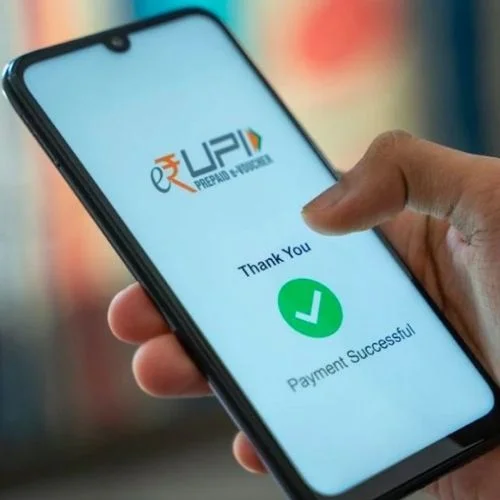Let’s explore the game-changing UPI Revolution and its profound impact on the FinTech industry, reshaping the way we handle finances.
In today’s financial world, technology continues to change the way things are done, replace money, and make financial services accessible. India’s Unified Payment Interface (UPI) is one of the most innovative innovations that has changed the landscape in recent years. Launched in 2016, UPI has made a huge impact on the fintech industry, revolutionizing the way people trade, transact and deliver financial services. This article explores the various ways UPI is changing the fintech industry, fostering innovation, financial inclusion and the transition to digital commerce.
What is FinTech?
FinTech refers to financial technology. FinTech startups refers to those startups which deliver financial services through use of technology. For example: BharatPe which used Unified Payments Interface to transfer money from one account to another.

The Birth of UPI: A Paradigm Shift in Payments
The Unified Payments Interface was conceptualized and launched by the National Payments Corporation of India (NPCI) as a real-time payment system that aimed to unify various banking services under a single platform. The fundamental principle behind UPI was to provide a seamless and interoperable infrastructure that would enable users to make instant peer-to-peer transactions and merchant payments through a simple mobile application. This marked a dramatic shift from the conventional banking model and opened the doors to a new era of digital financial interactions.
UPI has proved to be a blessing in disguise for the Indian financial system. It has not only strengthened the vision of cashless economy but also proved to be a booster for fintech startups in following ways
Catalyst for Financial Inclusion
One of the most significant impacts of UPI on the FinTech industry has been its role in driving financial inclusion. In a country with a diverse population and varying levels of access to traditional banking services, UPI brought banking to the fingertips of millions. With just a mobile phone and a linked bank account, individuals who were previously excluded from formal financial systems gained access to a wide range of digital financial services. This democratization of finance led to an expansion of the customer base for FinTech companies, as they could tap into previously untapped markets.
From Cash to Digital: Redefining Transactions
The traditional Indian economy was heavily reliant on cash transactions, which often posed challenges in terms of security, accountability, and efficiency. UPI’s introduction acted as a catalyst for the transition from cash-based transactions to digital payments. By offering a secure and convenient method to transfer funds, UPI significantly reduced the dependence on physical currency. Individuals and businesses alike began to adopt digital payments as their preferred mode of financial interaction, paving the way for a cashless economy.
Empowering Small Businesses and Merchants
UPI’s impact extended beyond individual users and permeated the business landscape. Small businesses and merchants, which were often deterred by the costs associated with traditional point-of-sale systems, found UPI to be an accessible and affordable solution for accepting digital payments. This shift empowered local vendors, shopkeepers, and service providers to embrace digital transactions, leading to greater financial transparency and efficiency in their operations. Today, even a roadside street hawker has QR code which can be scanned and payment can be done via UPI.
Fostering Innovation in FinTech
The emergence of UPI opened up a world of possibilities for FinTech startups and established players alike. The API-driven architecture of UPI allowed developers to integrate its features into various applications, creating a thriving ecosystem of financial services. This led to the development of innovative solutions such as digital wallets, investment platforms, lending apps, expense trackers, and more. The ease of integration encouraged entrepreneurs to experiment with novel concepts, transforming the FinTech landscape into a hotbed of innovation.
Seamless Integration with Other Services
Beyond its core function as a payment infrastructure, UPI’s flexibility enabled it to integrate seamlessly with a multitude of services. E commerce platforms, ride-hailing apps, food delivery services, and more integrated UPI as a payment option, simplifying the checkout process for customers. This convergence of services created a seamless user experience and demonstrated the versatility of UPI as an enabler of digital interactions.
Proliferation of FinTech Startups
The advent of UPI triggered a proliferation of FinTech startups, each capitalizing on the simplified payment infrastructure to offer innovative financial solutions. Digital wallets, previously limited in scope, blossomed into full-fledged financial platforms offering services like bill payments, mutual fund investments, insurance, and more. UPI’s open architecture enabled these startups to seamlessly integrate their offerings, creating a dynamic ecosystem that catered to diverse financial needs.
Data-Driven Insights and Personalization
The widespread adoption of UPI generated an unprecedented volume of transaction data. FinTech companies leveraged this data to gain deep insights into consumer behavior, spending patterns, and preferences. This data-driven approach allowed them to tailor their offerings to meet the specific needs of consumers, enhancing the overall customer experience. Personalized recommendations, targeted promotions, and customized financial advice became integral to the services provided by FinTech firms.
Strengthening E-commerce and Online Retail
As UPI gained popularity, it bolstered the growth of online retail and e-commerce in India. The convenience and security of UPI payments encouraged more people to shop online, spurring the expansion of digital marketplaces. The integration of UPI with e-commerce platforms streamlined the payment process, removing friction and enhancing the user journey. This symbiotic relationship between UPI and e-commerce platforms contributed to the exponential growth of both industries.
Reshaping peer-to-peer lending
The emergence of the UPI has also reshaped the peer-to-peer (P2P) lending landscape. It provides a safe and effective way to route loans and loans between individuals, bypassing traditional financial institutions. P2P lending platforms leverage UPI’s capabilities to provide borrowers with easy access to credit and the opportunity for higher ROI for borrowers.
The Future of UPI in FinTech
As UPI continues to evolve, its impact on the FinTech industry remains dynamic. With ongoing advancements in technology and the growing adoption of UPI, new opportunities and challenges will undoubtedly emerge. The potential integration of UPI with emerging technologies like blockchain and artificial intelligence could further reshape the landscape, driving even greater innovation in FinTech.
Conclusion
Unified Payments Interface (UPI) is a testament to the transformative power of technology in finance. Its launch transformed the fintech industry by fostering innovation, promoting financial inclusion, and redefining the way it does business. The impact of UPI is far-reaching, from bringing digital payments to the masses to supporting the growth of fintech startups. As UPI continues to shape the future of finance, it remains a great example of how technology can transform entire industries and create new ways of doing growth and
development. However, lack of security still remains the biggest hurdle in front of innovators. The number of financial frauds has increased by 65% in 2022 in comparison to 2021. Hence, the need of the hour is for a robust mechanism which is secure and trustworthy to enable better penetration of UPI into India’s rural land which still remains the most resourceful and untapped market of the world.
Frequently Asked Questions
UPI provided FinTech startups with a robust and interoperable platform for payments and transactions. This foundation allowed startups to build innovative financial products and services, including digital wallets, investment platforms, lending solutions, budgeting apps, and more. UPI’s open architecture made integration with these services seamless.
UPI’s simplicity and accessibility allowed individuals without traditional bank accounts to participate in digital transactions. With just a mobile phone and a linked bank account, even those in remote areas could make payments, receive funds, and access various financial services, promoting financial inclusion and empowerment.
UPI played a pivotal role in reducing cash dependence by offering a convenient and secure alternative to physical currency. The ease of digital transactions encouraged people to shift from cash-based transactions to digital payments, contributing to the government’s aim of building a less-cash economy.
Before UPI, merchants often faced challenges with expensive point of-sale systems. UPI revolutionized merchant payments by enabling them to accept payments through QR codes, eliminating the need for specialized hardware. This made it easier for small businesses to adopt digital payments and manage transactions effectively.














